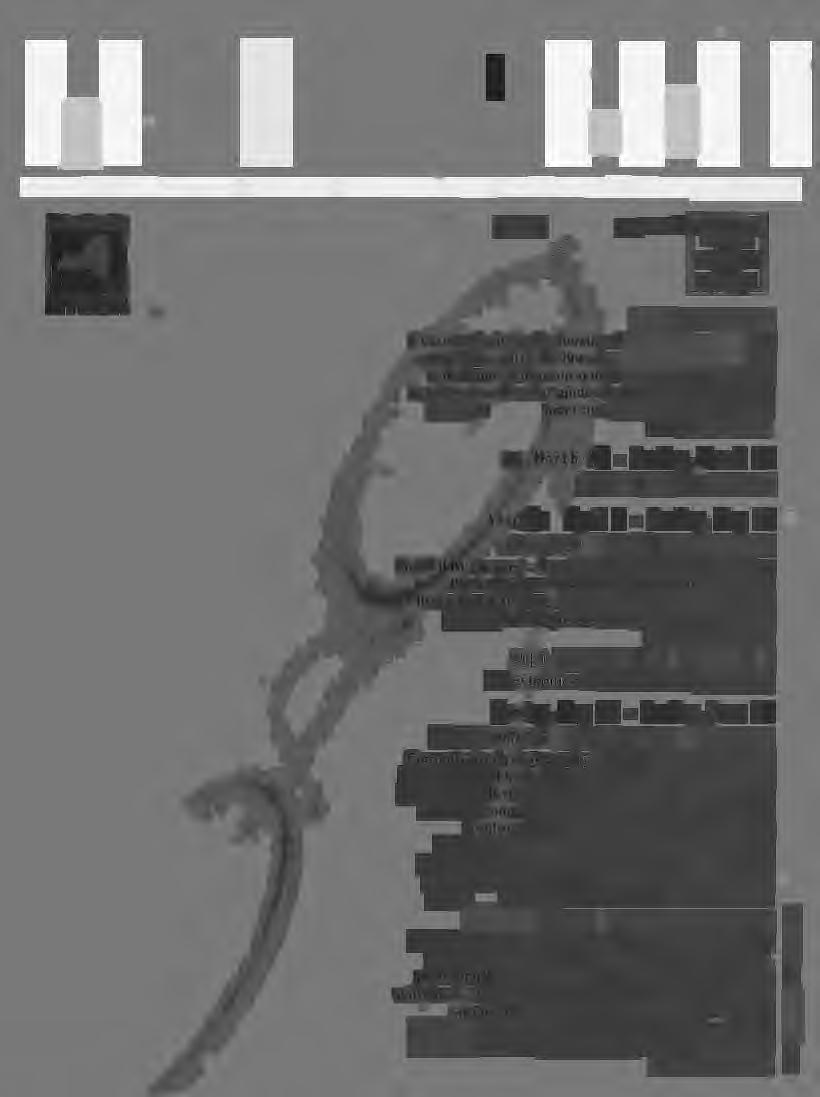
Editor'sIntroduction
Woodstock:Festivals,Mavericks, &HerveyWhite
ASharpLookout
Figuresfromthe Colony
In light:AliceGarik



Editor'sIntroduction
Woodstock:Festivals,Mavericks, &HerveyWhite
Figuresfromthe Colony
In light:AliceGarik

The Center presents three parallel exhibitions from Jtily to September 1997. These triplicate shows curated by Jean Gaede and Fritzi Striebel, Howard Greenberg, and Rebecca Lawton, form a doorway to Woodstock's photography history.
Through the exhibits and this magazine, you examine the role played by historic (1920s-60s) Woodstock photographers, see images of illustrious Woodstock artists and art celebrations, and regard artists who invent new visual chapters of the region's history.
The compelling motivation of this presentation is to celebrate the spirit ofWoodstock as a metaphor, which has had impact on the world.
The list of internationally famous painters and sculptors associated with the town-the oldest functioning art colony in the United States-has filled volumes. What has not yet been made available to the public is an overview of work by figures in still photography.
As inheritors of the Woodstock festival spirit, and as part of the village that has become the small town known around the world, the Center contributes to a vital creative tradition and is uniquely qualified to present this selection.
In 1996, an historic Woodstock festivals archive was gifted to the Center's Permanent Collection. It contains hundreds of photographs of artists and galas, oral history tapes, and hundreds of pages of an unpublished manuscript on Byrdcliffe and Maverick art colony celebrations. The authors are Woodstock residents Fritzi Striebel and Jean Gaede. Images from their gift, from the Center's own archive
of the Aquarian Music and Arts Fair of 1969, and the photography selected by Greenberg and by Lawton, complete the circle of time periods.
For an audience of the future, this visual story of Woodstock photography provides an important element in finding the thread which weaves from past to present.
Maverick-the idea of originality and irrepressible freedom-is now embodied in the Woodstock community, the Center's home, and the nation's culture. Those who came to the musical explosion of the 1960s celebrated an idea seeded on the same spiritual ground where Hervey_White-fifty years earlier-had set the stages for his Maverick festivals.
Our project is a time-binder, a recognition of continuity between artistic generations, and tells the story through photographs of artists who, by their festivals,Jostered a new popular culture.
It is inspiring to see three generations of artists leaving their stamp of excellence on American history. The Center creates this context to raise and deepen awareness of a rich artistic legacy.
-Kathleen Kenyon, PQ editor
*The resulting document-which is here excerpted-is a Festivals catalog of ninety-two text pages with laser photographs; it is available for a $10 donation. (Make checks payable CPW, MC/Visa accepted). Please contact the Center's directors if you would like to give a gift to the Permanent Collection.
In 1967 we had just completed our involvement with a cookbook called Woodstock Recollection by Recipe. The book caught the flavors of the many strata of this special place. Flushed with success and sparked by a quickened interest in our heritage, we couldn't stop.
We then began to tape interviews with people who had lived close to the story of the two Woodstock art colonies: Byrdcliffe and the Maverick. Each Tuesday we would prepare a lunch, settle in front of the fireplace, sip wine with our guests, and harvest ripened memories.
Our guests would arrive-the carriers of history (a slight stoop here, arthritis maybe)-to tell their personal stories.As they transported us back to their loves,friends, and dreams, laughter renewed the soul.They left with a lighter step.And behind them they left this story for you.They are our narrators.
Gathering Maverick Festival material against the backdrop of a Woodstock revitalized by the Music and Art Fair of 1969, we bumped open adjoining doors and glimpsed a circling of the two time periods. We learned of the existence of Hervey White's unpublished autobiography, tracked down his literary agent, Johnny Pasciutti, and were granted permission to excerpt the writing.
Most of the Maverick Festival photographs were taken by Alfred Cohn, of the Stowall Studio, in Woodstock, New York, in the 1920s.These treasures were gifted to us by John Pike, well-known Woodstock watercolorist and friend. Other friends contributed photographs, stories, and clippings from their own private collections.
Jean Pierre Farkas, a French journalist, was touched by the place and the story, and he consented to write the introduction. Pat Confrey joined the effort for the final editing.

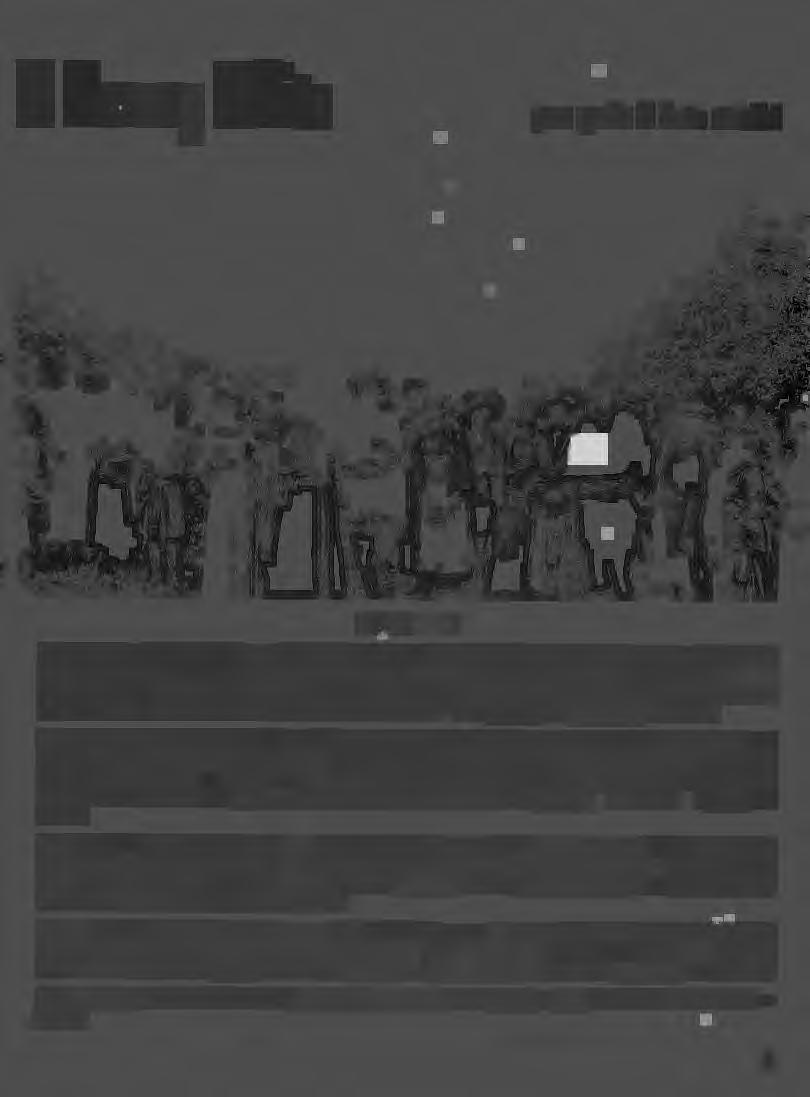
Festival day at the Maverick went like this:At three in the afternoon people would arrive at the festival grounds, moving among the selling booths, greeting friends, admiring costumes, thrilling at the year's decorations and sets, taking part in the games offered, and witnessing the wandering entertainment. The costumes and decorations made the occasion brand-new, even among the familiarity of friends.
At dusk the campfires would be lit and the picnics spread.The smoke carried the smell of applewood and grilling food: trout, onions, potatoes, stews, and covered apples "baking" for dessert.A gathering.The approach of night camouflaged all flaws and separations among the guests and performers alike. The shadows softened and loosened the participants: acrobats, dancers, clowns, and jugglers ... soft music ... a rising full moon.
After dark had fallen around them, they settled for the big event of the day.A spectacle had been createe, adapted, planned, and constructed by groups of artists and townspeople, working for many months, leading up to the day.Audiences were awed by the caliber of creativity and the professionalism of the entertainment, even when events took an hilarious course.
Hervey White's legendary festivals were held in the full moon of August and they became-with each succeeding year-more creative, more fabulous, more ... well .. .Dionysian, until, like the moon, they reached their zenith.Their luster began to wane and finally was extinguished in clouds of notoriety and censure.
The following recollections stand in flamboyant testimony of the ability to play,manifested in FESTIVAL!JG&FS
Who was the first "maverick" to come to Woodstock? Whoever he was, in the eyes of the festivals' pagan gods he was pure. For he did not know he was a maverick.The word itself has a rather musical sound. It is associated with feelings of independence, nonconformity, freedom, and forces impossible to contain. The dictionary origin of the word is surprising.
Maverick, in fact, S.A.Maverick, was the name of a Texan rancher who lived from 1803 to 1870. He had the peculiar trait of not branding the animals in his herd, something that at that time, in the West, was a sign of sinful originality. As often happens in the alchemy of words, the name of a person can radiate beyond the person himself and become attached to those things associated with him.This is indeed what happened. His unmarked animals became known as mavericks, and long after the man himself left the earth, his name stayed attached to the idea of originality and aversion to rules and organization. Today the word is used both in describing wild horses and with "marginals" concerned with preserving their freedom.
Why has a word that spread at Woodstock? The word is now the people who lived there in the People who want to be free to differently, and to celebrate society. Unlike punk or the something in the spirit, neither people and its history have come
As a foreigner and one who has had the advantage of observing threads of the story that tie the collection tells the story of the who-by their festivals and new popular culture.
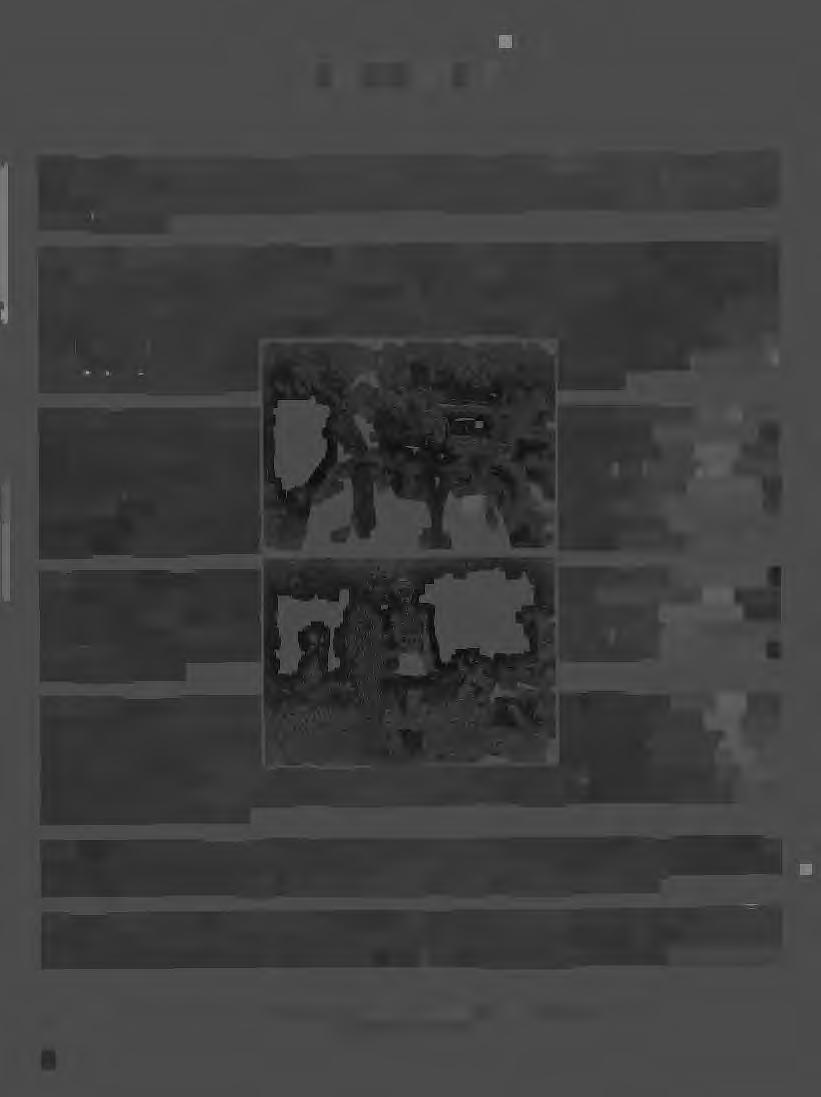
through Texas come East to stick embodied in WOODSTOCK; in past and those who seek it now. create, to dance, to dress without the normal restrictions of French zazou, being maverick is transient nor a fad. Woodstock ' to mean maverick.
lived for a time in Woodstock, I and disentangling the many mavericks to Woodstock. This artists, poets, and musicians originality of spirit-created a
Those who came to the festival in 1969 never knew the real Woodstock or the fun-loving, free- dam-seeking people who were organizing celebrations there long before. However, it now seems logical that the good-na- tured musical explosion of the 60s was a celebration with a festival, a great mass, to be proclaimed as "Woodstock" ... an idea seeded on the same spiritual ground where Hervey White, some fifty years earlier, had set the stages for his Maverick Festivals, which were to become a cultural fact.
Why did the mavericks come to settle in Woodstock and create this communal life that is so original and so different from that found in other American towns? They were drawn there for the proximity of the New York market but chose to live their days in Woodstock, rejecting the pace and life-style of New York.
It's a rare place, where life is respectable for all. While it's true that the majority of those who live in Woodstock come from old, conservative, and provincial backgrounds, they have apparently been attracted by and accommodated themselves well to the mischief of the mavericks. I didn't see the slightest sign of intolerance there-although
a
sense of neighbors sharing in rites,
·-whether they have long hair or are the wearers of ties
Jean p1erre farkas
people think what they like about others, never does anyone force their way of thinking or acting on anyone else. The mavericks always have had the wisdom to hold their fetes. on home ground and not try to entice others into their follies and dreams.As you will see in the collection, it was indeed that viewpoint of the outsiders, who didn't understand the spirit of the celebrations, that caused the problems that eventually stopped the Maverick Festivals in the 1920s, and brought chaos and violence to the music festivals that followed "Woodstock" 1969.
1 As it happens, however, here in Woodstock these divergent communities do sometimes meet, thereby fostering another American virtue: that of openness and ease, in the sense of neighbors sharing in each other's rites and performances, whether they have long hair or are the wearers of ties.
This is why artists and poets have eux in the Woodstock area: cottages, and protected by the was a butcher in Woodstock who to his customers and a gentle hilltops. Threads of exotic smoke an exotic smoke shop-shades of the non-mavericks are going to family to a drive-in, or holding a
This is why this collection is era which is not yet lost and the creativity that-despite its those who may have had the they maverick or not. The belong eternally to the mavericks during that time-and this-and Americans of the twenty-first will provide an important link in their past; a past, somewhere
Today the mavericks and the shop-keepers have replaced fun- 1 fleeing the cosmopolitanism of the weekends.
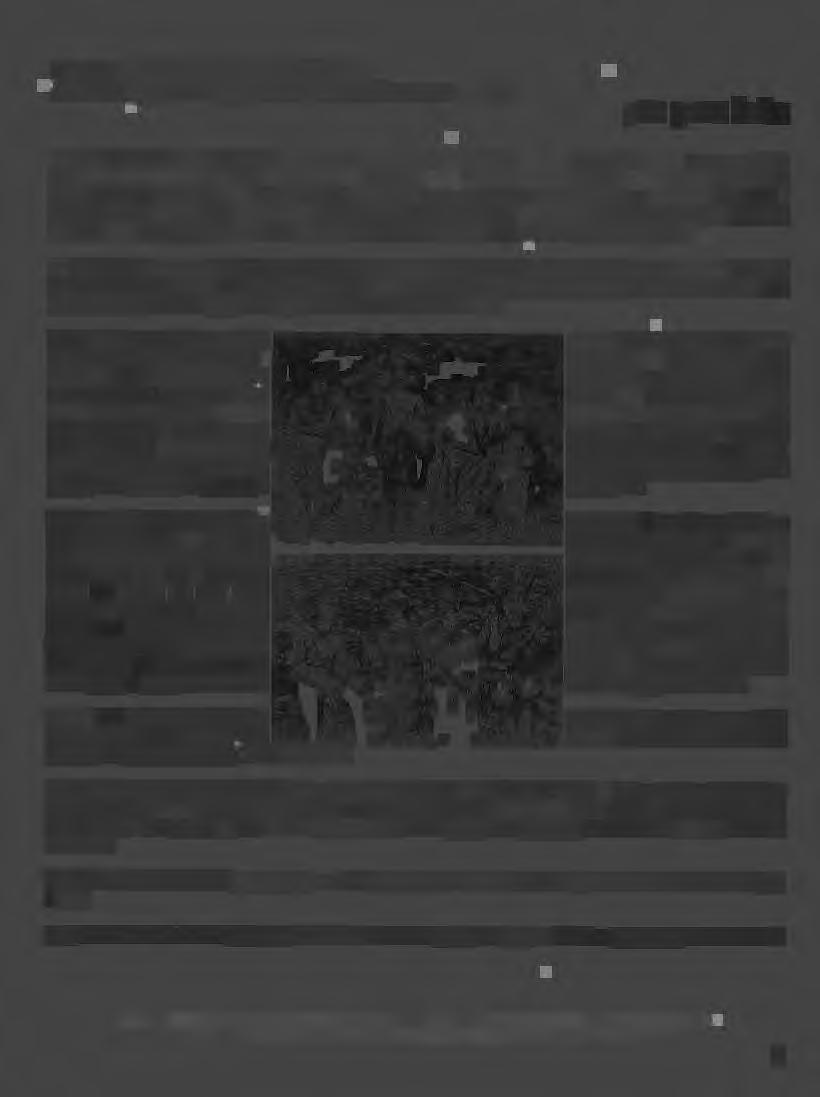
always felt comfortable and chez sheltered by their woods and tolerance of their neighbors.There served jazz and a shot of whiskey priest who would sing from the mingling in the pure air, and even Katmandu.And at the same time, church on Sunday, taking the charity fair.
important. It sets in our mind an depicts the freedom, the joy, and "marginality" -sticks with all of chance to live in Woodstock, be photographs presented now and also to those who lived here gained in their own freedoms. For century this story of Woodstock finding the thread that has woven between folly and wisdom.
others share in the regret that seekers and that local artists are
Woodstock-gangrened by banality? Not so fast.Along the trails of the Catskills there is still an artist to be found, a painter who sits every evening before the red sun and delights in that glow of joy which turns to rapture at twilight. At the edge of the house, by the side of Cooper Lake, a child plays with squirrels, unaware that he, too, will be a maverick.
Thus the whole Woodstock community, even the conformist, is forever touched by the charisma of festival.- ]PF, 1970s
Jean Pierre Farkas is a French journalist who lived in Woodstock during the early 70s while on assignment for Paris Match.
Above: left to right: Ernest Brace, Florence, Cramer, Reeves Brace, Konrad Cramer, Helen Walters,Jonnie Gershoy, Harry Gottlieb, Margie BarnesHere is the story of two small campfires. Small lights for brief seconds in the long evolution of people shaking loose to delve into their potential
HERVEY WHITE*
The audience sat waiting for an hour. The campfire supper on the pleasance was a marvel to be talked of: the rising moon, the waving banners through smoke and firelight, the songs with concertina and guitars. Then, too, there were people still arriving-long lines of lighted cars on the road below.
When suddenly behold! As if by magic, the stage was vacant. The overture of the orchestra set all dreaming, and the door of the little quarry house burst open and out floated Lada, a white vision in a costume of Queen Catherine, with towering headdress, weaving a stat('.ly court dance of three hundred years ago.
ROBERT DePEW REYNOLDS
(tape, 1975, on the Woodstock Aquarian Music and Art Fair, 1969) A lot of people set up their camps, and a lot of people were by the embers of the fire and sleeping in the meadow.And all of a sudden from the road that came down the farm trail into the meadow here was a whole caravan of school buses, all decorated, lights on, horns blowing, about twenty feet apart .. .I don't know how many, seven, ten and they came through the night, their lights coming through the night like a flotilla of boats.
In 1969 there was a gathering of the young people in America that, after three days of festiva~ had altered the course of the world. They had come together to listen to the electronic ballads of their time. Something happened, and when they packed up to leave, they were a power politic. The event was and will forever be "WOODSTOCK."
A member of the "Ohayo Mountain family" of Woodstock, Robert DePew Reynolds, went to Yasgur's farm several weeks before the Music and Art Fair to set up a kitchen and prepare for a throng whose size could only be guessed at. His story takes you into the heart of the happening, which was to surpass in size and impact any festival in history.
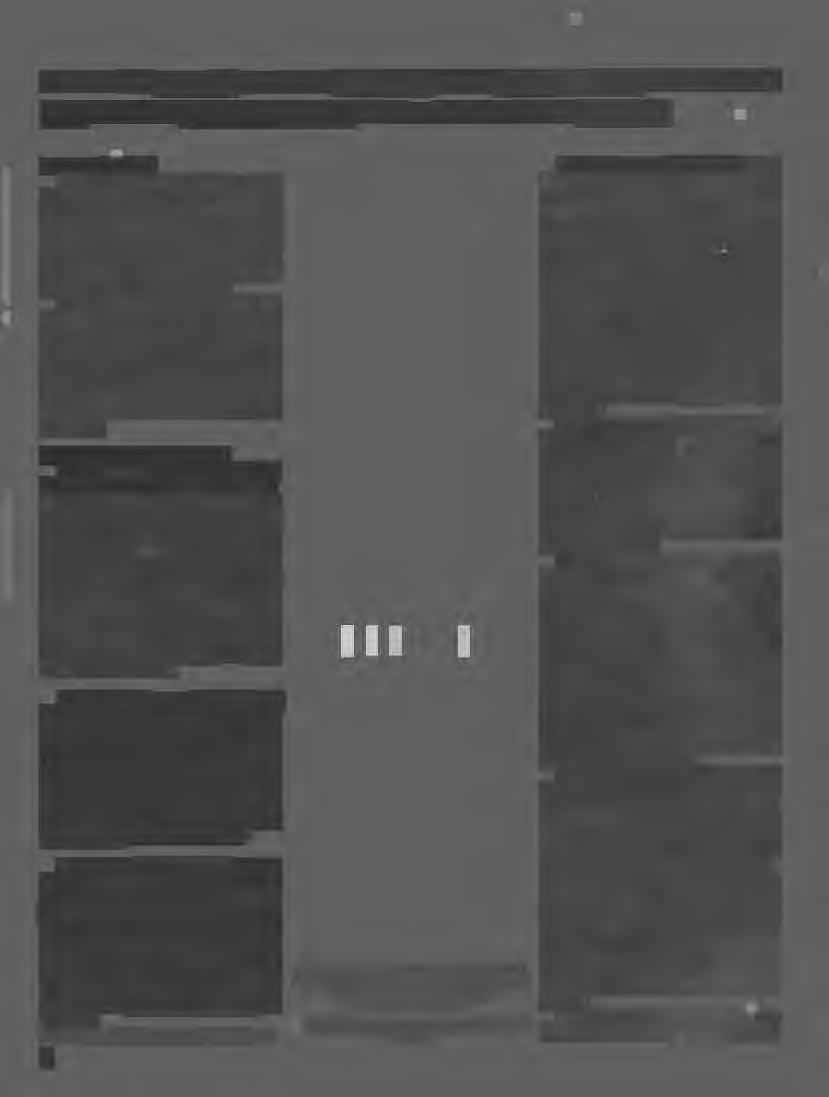
ROBERT DePEW REYNOLDS: Two days before the festival was to open, we were still working on the trails and campsites and breaking in new workers, and the kitchen was getting bigger and bigger, and the pots were getting bigger and bigger! Our supplies were getting immense. The Red Cross had already started to help us, and local aid was coming. A lot of it was the producers' part. They had all that advance money, and they were spending it! They'd give you anything. Rice? You want rice? They brought truckloads. And the police department ... we wanted balloons and sound-makers and the police could get all of this.
We had a contract that New York City police would be there That's what the town ofWhite Lake wanted us to have. They said, "We'll let you have the festival if you have all these New York policemen." So the city policemen came out and they wore red T-shirts with a peace symbol on the front, and blue bellbottomed trousers.
It was a pure, fine, kind of feeling. People came there and they wanted to be open and righteous, because they felt that was the true weapon against their feeling of oppression. People were there from South America, Canada, and they all knew the handshake, and they all knew how to dress so they could recognize each other, how to speak, how to act, without even knowing the same language. People I had known in Europe who were Bohemians, expatriates, but definite energy sources, were somehow back in the United States.
Do you know what Richie Havens did there? The sun had gone down, and he finished playing Here Comes the Sun, and everybody was cheering their heads off, and he said, "I don't know how many people are here, but I never heard such a noise in my life. Let's count ourselves." He lit a match, and he said, "Why doesn't everybody else light a match?" And he was talking from the sound stage, which was kind of in the bottom of a cup. These three hills went around, and they were covered with thousands of people, and they all lit a match.And you looked around and there it was! The Love Bomb!
My biggest impression of the Woodstock Fair was ... that it worked.
Without any kind of authorization, official sanction, money, or supply routes. On the opening day there was ... a nucleus, a center circle of energy, from [the sound stage], in concentric circles, people were closely packed. As you went out, they were still coming in, and
a vision about a place that would become the model fo, the new consciousness Woodstock is a holy land and the people who come here seem to be like pilgrims who want to touch the ground where the miracle happened For it was a miracle, that
sunk their shafts in the ledgy mountainside, and for fifteen hundred feet encountered nothing but good tough bluestone.At the end of the drilling operation Hervey found himself faced with a bill of fifteen hundred dollars. By this time the Maverick was be-

they were walking.And as you went further out, there were traffic jams in every direction, on every road.
It may have been the greatest of all festivals. It was a discovery of how many of us there were; how many of us really felt different and no longer alone. We were a nation.
NINA GRABOI (tape, 1971)
I came to Woodstock because I had
festival, and I think there are more miracles to come out of here. It is amazing how "Woodstock" has traveled all over the world; tourists come seeking it.
LUCILE BLANCH (tape, 1968)
Early in 1915 Hervey was forced to dig a well to supply water to the group of houses around Birdseye.The well-drillers
A Maverick Festival, I 920s, CPW Pennanent Collection
ginning to be valued for its contributions to Woodstock life, and out of friendship for Hervey, a group of artists decided to settle the well-drillers' bill by putting on some kind of festive, dramatic production.This performance, destined to go down in history as the first festival, was held in a bluestone quarry on Hervey's property-and according to some was the best festival ever held.At any rate, it put off the well-drillers until 9

the next year, when there was another festival, which was also a great success.
Hervey thus found himself with a rather important source of income, and for fifteen years the festival gave him his principal revenue. If he had a good festival he might be able to build a new cottage.The festival idea expanded enormously: It became the only thing of its kind in America, a frankly bacchanalian rout at which most of the ordinary inhibitions were slipped off, revealing the merrymakers as something the Greeks had plenty of words for.As many as five thousand revelers sometimes cooked their campfire dinners, saw Hervey's show, and made the surrounding mountainside ring with the sound of their merriment-into which, I am sorry to say, crept a sinister note of brawling and alcoholism. Finally, no woman's honor, or no man's teeth or nose, were quite safe, and more in sorrow than in anger, Hervey was obliged to discontinue tht; festivals in 1931.
HERVEY WHITE* The debt for the well, fifteen hundred dollars, was growing insistent, and I decided to give a show in attempt to meet it. I had musicians and painters who would help me-artists always like to play beside their work.
The Narodnys had taken one of my houses, and Ivan, spying around on the mountainside, found a stone quarry excavation that would have perfect acoustics, walled in on two sides with smooth cliffs. Mrs. Narodny tried it out and pronounced it marvelous. She had a friend just back from Russia, where she had been studying, an American dancer whose services could be enlisted gratis. She produced photographs, immense ones, very beautiful. Lada's father was a millionaire; she could afford them. I set to work early in June. The festival was to be the full moon in August.
Fred Jones, my former workman in Byrdcliffe, was living close by and out of a job. I hired him, and we went at the old quarry to clear out the rubbish and build a stage. People scoffed and said I was crazy. No one would ever climb that hill. It was a sharp pitch, but I argued that people like to take a climb and then brag of it. In three months we had a stage and auditorium with gallery pit
and dress circle all complete. Seats in the pit would be a dollar, in the gallery perhaps seventy-five cents, and in the dress circle two dollars and fifty. A thousand people would pay for the well and sor.ne over. I would sell reserved places in advance.
I planned two performances: an orchestra concert at four in the afternoon, and the dancer with orchestra at eightythirty the same evening.With games and a picnic supper between. I advertised that all should come in costume; it would put the people more in humor for a frolic. I would have booths on the meadow below and campfires for the picnics of all.The painters all took to the idea and a dozen or more started in to help. Andrew Dasburg and MacFee would make banners; Frank Chase,John Carlson, and Konrad Cramer would trim booths.Aileen MacFee treadled miles on her sewing machine. Those three produced some thirty banners of various sizes and patterns, the two largest ... nailed on poles.
The booths were arranged in a semicircle, built of poles and covered with muslin stretched smooth. Their colors were mainly white, blue, and yellow, and two towers on the ends were topped with black. The booths were let out to artists for fake shows or gaming-tables or fortune-telling.All profits from everything went to me except food booths set up by my farmer neighbors, who gave me ten percent of what they sold.
My conductor, Pierre Henrotte, was on tour for that summer, but Leon Barzin took his place. He engaged fourteen men from the Metropolitan Orchestra at union wages. His friends shook their heads-he took the chance. He secured a beautiful girl for solo harp, who came with her father without charge. Madame Narodny would sing also in the afternoon. Our concert was worth the money, all agreed
I planned first to have the festival on Thursday ... in case of rain it would give me two days for fair weather. But Lada's mother, Mrs. Schupp, consulted Evangeline Adams, and Friday was pronounced the only day. The orchestra came Thursday night for Friday morning rehearsal, and all day Friday it rained.At sunset the weather cleared-we were hopeful-and by twilight, with lanterns,
the rehearsal was on. I shall never forget walking about through the auditorium with Mrs. Narodny, herself a heroic figure fromTannhauser.We looked down
Das burg came back _.from the Zuni dances in New Mexico and was all for modeling the mud ni.en from their dance. Hog faces on nude men draped
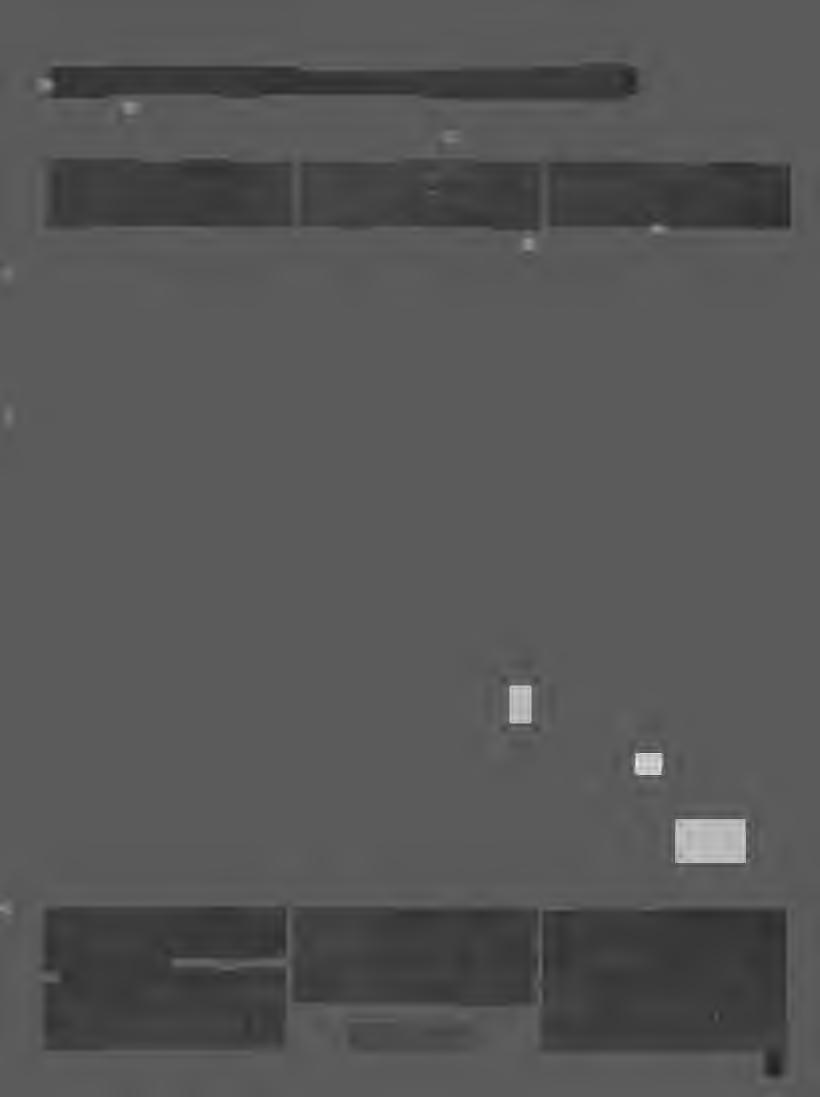
on the mysteriously lighted little orchestra and then out and across the moonbathed landscape. It was the pride and elation of a lifetime.
It was festivals that would pay for the theater and soon they were paying very well. The programs were modeled on the Temptation oJSaintAnthony.I even adapted Salammbo later on. Andrew
with deerskins, and the rattles and whirling staff for the wind. I planned the development of a planet with the mud men rising up from the soil. I built a half moon for a background, painted black, with closed doors to break through. Be-
hind that and going over, I built steps concealed by the black edge of the moon; twenty feet high they rose up and descended on the other side. The mud
men struggled up from the earth and tried to climb but were frightened and fell back by great monster grotesques that represented the four winds, or the gods of the lightning, or imaginings createc;_Iby unborn souls. These monsters had\. man concealed beneath who whirled about with uncouth noises and gestures. MacFee designed one,Andrew
Maverick Festival circa I 920s CPW Permanent Colleclion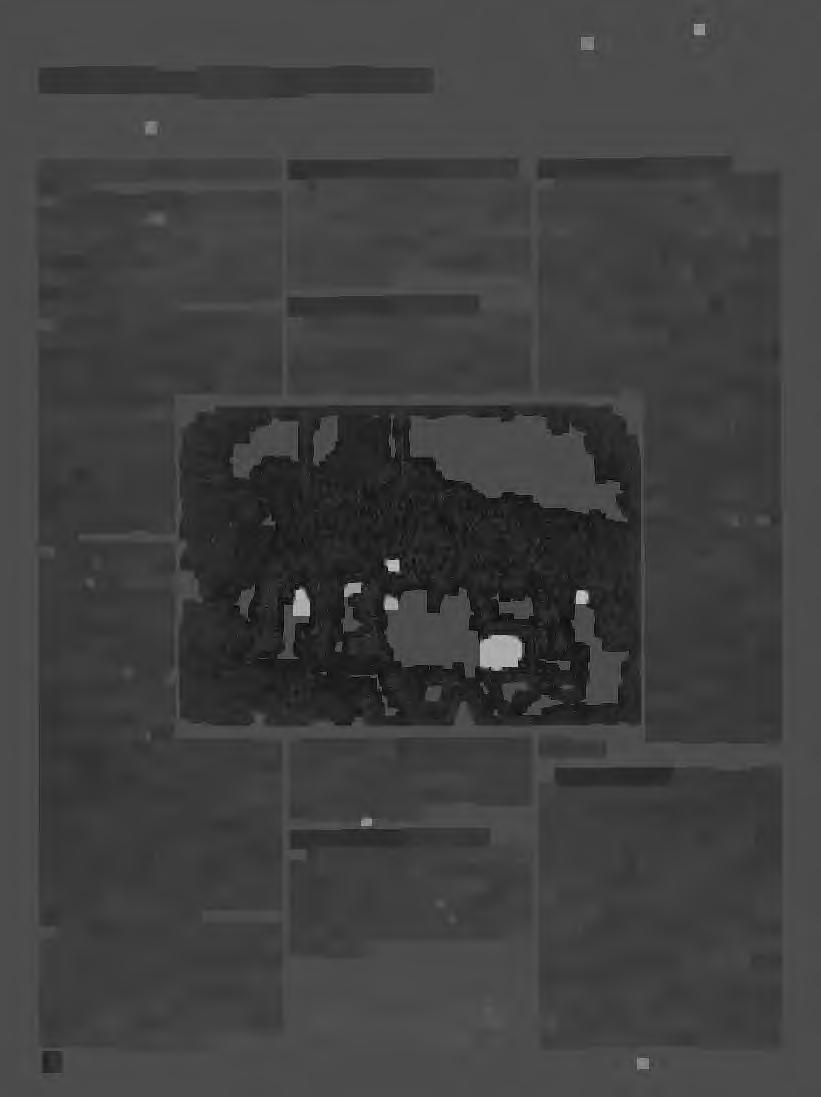
Dasburg another, and Alex Brook made an ogre.
A Greek scene with a temple made the second set .... Bob Chanler, as Dionysus, came on with Greek goddesses, animals, goats, and donkeys, that he had driven all the way from New York the night before. Venus was drawn on her shell, nymphs and fauns were cavorting and singing.
The third act was the Italian Renaissance, with Dante and the poets winding up with Savonarola at the stake. I took the part in black hat and cloak, and when the papal revel was at its height, strode in and put the curse on the debauchery.The captain had not acquainted the revelers with the plot, and they thought I was driving them off in earnest; such was my reputation as a puritan.
"Behold the Gates of Hell," I yelled at them, and they shrunk back in fright realistic. At my words the big black doors swung open, and the set piece behind was discovered. Now, Eddy Ward had charge of the set piece, with the devil and his imps torturing souls. He had told me before he would make it artistic, but what he had done was more like Woodstock heaven than hell. In soft rose light the imps were playing poker with expressions of gentle pleasure on their faces. No matter, we rushed on the fourth act, which was decadence and the worship of the snake.Jo Burgess had reared up a great python that towered to the top of the moon, and pale dancers came weaving around it and offered it their votives of flowers.
The fifth act was a fire dance in the darkness, to be succeeded with bands of angels for the finale. Elsie Kimball had assembled the young girls for angels, who ascended the steps from both sides where they crowned the Virgin Mother in white glory while the orchestra held the chorus of holy worship.
FRANK LEON SMITH (letter, 1975)
I believe the success of the early Maverick Festivals was due to the fact that they were "costume parties."The young artists loved to dress up in fancy rigs. Each year a different period would be selected and we'd try to rig up appropriate costumes.
LOUISE LINDIN (tape, 1968)
The theme was the Canterbury Pilgrims. Everyone entered into the spirit. They came on horseback, and the women wore the pointed hats with the long veils hanging from the tips. It was
WILNA HERVEY (tape, 1974)
During the war years they had a big pageant at the festival. Do you remember the Russian Battalion of Death? They were all Russian girls. Hervey wanted me to head the battalion of girls in the pageant. Well, I got some soldier's khaki suit, but I couldn't find any boots or puttees, so I was at a loss. An hour before I was due onstage, I was still bootless. Then I had a sudden inspiration. Nearly everyone had driven horses to the festival instead of cars, and I thought a pair of lines from someone's horse might do the trick. So I went to
a charming sight. I remember Ned and Frank Chase dashing in on horseback, looking wonderful. Everyone brought food, and there were little fires burning all through the night.
AILEEN CRAMER (tape, 1974)
I remember one festival [The Year of the Tree Houses, 1921] when I was just a little kid. It was the year they had all these great tree houses just little platforms in the trees actually and people were up there. God knows what they were doing.
The orchestra for Salammbo was donated by the
the scene. the parking place and took some lines from somebody's horse and came back and wound them around my legs and fastened them with safety pins (no doubt from my own pants!). So I walked out on stage at the head of this battalion of girls, and there was great applause, but all of a sudden both safety pins broke and I began to unwind. So instead of walking on proudly as the important general or something, I broke ranks and hid behind the other girls all through
HERVEY WHITE* At the upper end of my festival stretch of meadow I planned a theater that would accommodate five thousand. The mountainside was cleared of timber for the seats, and a level space at the foot opposite made a stage with a proscenium that was close to a hundred feet. I left a screen of trees for the backdrop and built two dressing rooms in the grove at the wings. With a stage depth of forty feet and side entrances to the dressing rooms, I could handle a cast of five hundred without confusion or blocking of groups. In front of the stage I dug an orchestra pit and, while there was little of the romantic quality of the old stone quarry theater, there was ample space
for pageantry and spectators
By the beginning of the last week before the performance, it seemed the entire community ofWoodstock artists was engaged. I remember remarking to Miss Little at the slowness of the web she was weaving, when she burst forth with, "I am working at this alone. Do you
A screen of boughs h~s concealed the table of Nebuchadnezzar, which is now removed to show the second act. Here come athletes, prizefighters, wrestlers, and dancers, and the audience is wild with applause when their favorite; Marian Koslov, a professional, is brought on in a casket by her showman, thrown
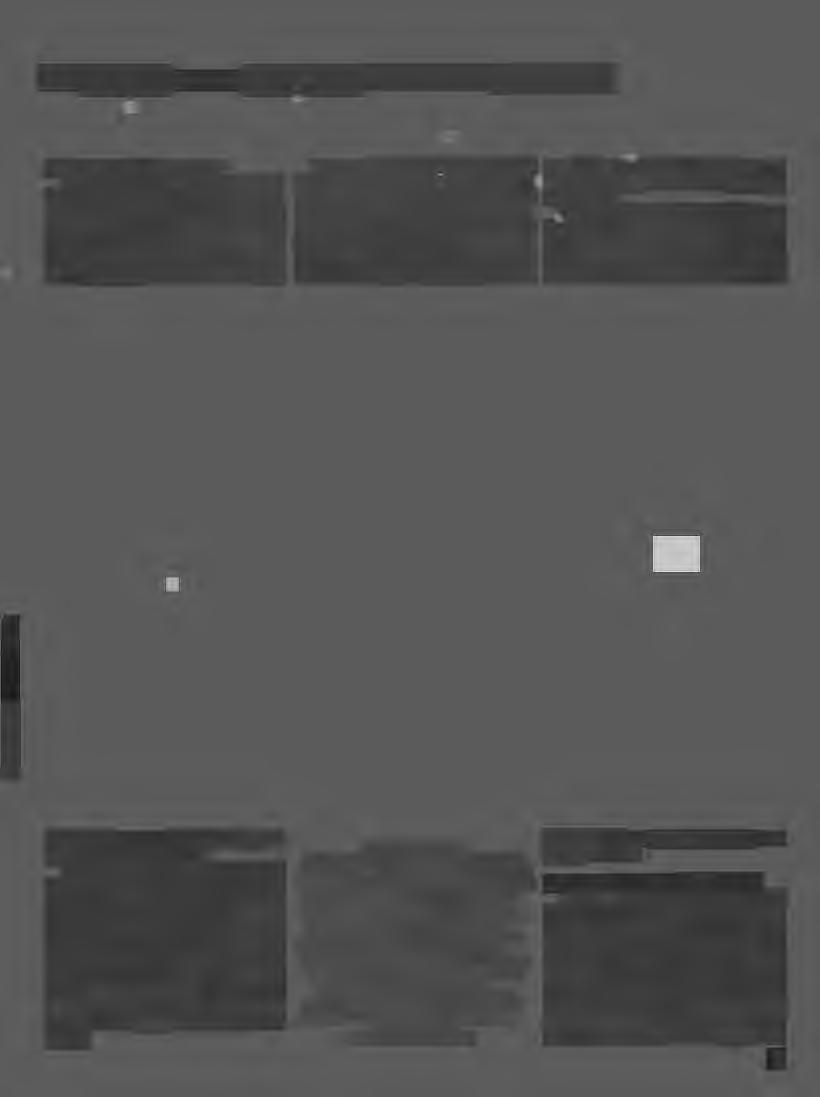
know how many are working for you today? At least five hundred."
Elsa Woolsey, our poetess, was to be our Queen of Sheba, who came with maidens, cupids, musicians, and dancers, with attendants bearing caskets of jewels before her palanquin, and monkeys to bear her train when she alighted. At her approach the old saint,Alex Brook, is horrified and turns away his face, and Satan is disappointed. It is William E. Schumacher, the Byrdcliffe artist, dressed in a scaly suit of blue and green.
The Committee of Fifty We have been able to identify many of those in this Maverick Fetival photo from 1929, they are: Back Rows (L-R): Eugene Ludins, Irving). Ballin, Carl Walters, Maude Petersham, '?,John Caroll,Willilam Harlan Hale,Sam Wylie, Ned Thatcher, Margery Striebel, Helen Walters,"• Leo Gershoy, Polly Rosen,Josh Billings (Henry),John Striebel, '?, Florence Ballin Cramer,Armand Zegri, ??, Isabel Howland,Judson Smith, Reeves Brace's sister, Reeves Brace, Paul Lemay, Ernest Brace, Farrell Pelly, ?',,,, Yasuo Kuniyoshi, Hughes Mearns, Fagley Mearns. Front Rows:Augusta London, Frank London, Mary Dallett, Arnold Balnch, Dr.Arnold, Mary Smith,"• Captain Jenkinson,Jo Cantine, Gretchen Smith, Katherine Schmidt, Peggy Bacon, Inez Carroll, Louis Bonelie, Eleanor Rixson, Lucile Blanch, Ida Gershoy, "· C.Adolph Glasgold.
CPW Permanent Collection
out, and set on with his whip to urge her to her limit; the shouts are going up to the stars.
The music changes and the last act is imminent. I glance upward and back at the slow-moving procession. It is the most impressive I have ever seen in my life. Mrs. Kefer sings Glory to God in the
Highest, and our greatest pageant ever given is ended.
EUGENIE GERSHOY (tape, 1975)
Some of the artists gave away most of their summers working for the festival, but it was a wonderful communal experience. My husband, Harry Gottlieb, had worked with the Provincetown Players as scenic director and stage manager, so he was equipped to stage manage and direct plays like The Temptation of Saint Anthony and Salammbo. When we did Salammbo, I was not only If the

Salammbo herself, but for the great Moloch to whom children were fed as sacrifice, I made a fifteen-foot statue of papier-mache on chicken wire which was quite terrifying. Russell Wright worked with me on these sets.
HERVEY WHITE*A third work of genius was a circus of grotesque animals in papier-mache, conceived and created by Russell Wright before he was twentyone years old. Great square-headed lions did a dance, trained by Ruth Schrader, who was one of them herself, and whipped at by the Maverick starry beauty, the famous young Billie Lemay. There were elephants, ostriches, and giraffes in procession. Circus riders performed on mammoth horses that wheeled with their rollers on iron tracks. There was a torchlight procession of black men with wide Egyptian headdresses and bronze aprons, turpentine blaze and smoke casting down lights and shadows as they marched into the darkness of the night. Carnivals were paying for the twenty houses I had steadily been building to shelter young artists.
EUGENIE GERSHOY (1975)
Ever hear of a ballet called Krazy Kat? It was done in 1920 at the Chicago Grand Opera by Adolph Bohm and his famous ballet troupe. We did it on the Maverick! Meck [Austin Mecklem] was Krazy Kat. I was the mouse, Ignatz. Paul Rohland was Offisa Bull Pupp, Arnold Blanch was Gay Dog, and Margie Barnes was Stork. George Barre re conducted the music for us, and he had also conducted the music for the original production in Chicago. He said that ours was the more beautiful production.
HERVEY WHITE*The Maverick had another renowned neighbor, Alexis Kosloff, one-time ballet master at the Metropolitan Orchestra. He came first to give a recital in the theatre and brought his pupils to assist him. His success was so marked he gave a second grand ballet at one of the festivals .... The Arabian Nights entertainment was one of the most brilliant festivals of those high days.
SCHRADER (1975)
I remember the dances. In the begin-
first festival was the natural springboard for his idea of the Maverick Concert Hall:
If you will continue the support you have given, I will build a hall for chamber music, and guarantee a concert every Sunday afternoon with a string quartet at an average rate of fifty ce_ntsa ticket.
I will print season tickets tomorrow and put them on sale. Twelve concerts for six dollars. Send in your checks for subscriptions. And in two days the checks did come in.
ning they were just Prohibition dances, where they all got a little tight, but later they got really rough; they had to have state troopers and everything. The last two festivals got too wild. It wasn't anymore just for the artists; it drew outsiders Kingston, Poughkeepsie, New York, Albany They didn't understand that a bunch of friends and artists having a good time was quite different from the "all stops" wild time they interpreted it to be. So it had to end.
Hervey White, in the following excerpts from his autobiography, tells how the enthusiasm of that
Spring had come, with no money to build a music hall and season tickets already sold. To make matters more interesting, my musician artists all were on tour. I had planned this affair for my friends, who were always complaining that they had to play in hotels, and pay out all they made to board their families. I had told them they could live on the Maverick, play music that they liked instead of the hotel stuff, and I would guarantee them twenty dollars a week, enough to keep their families in comfort, and now they had been offered orchestra jobs in big cities. I had sold the tickets and was building the hall and everyone had deserted me.
George Plochmann now proved to be my friend (he was married now to Betty Kimball). Pierre Henrotte had advised me to rent a piano from Steinway and I could find someone to play. With courage, then, I went on with the hall
Remembering my old lesson in physics, that the best acoustics came in multiples of two numbers, I chose two and three for the numbers and laid out my plan on their multiples: 48 feet long, 36 feet wide, 18 feet to the purlins, 24 feet
to the peak. To avoid interruptions of cross beams, I planned all beams to run longitudinal. It worked to a "T" in this instance; my hall has the best acoustics in the country. Every artist who has played there says the same ....
In June 1916, Hervey White announced the beginning of the Maverick concert series. The announcement was printed on his own press, with type bought from the proceeds of a special concert given by Woodstock musicians.
On the afternoon of July, in the Maverick Hall, on a side road between the villages of Woodstock and West Hurley, will begin a series of entertainments unique among the musical events of our country.
These concerts will be devoted to that highest class of all music, known as chamber music, and will be given by a small group of musicians especially selected for that purpose ... The programmes will be announced abroad in advance and patrons will do well to watch for them in the Kingston Daily Freeman or other local papers.
In addition to the programs of music, which will begin promptly at four; every Sunday afternoon, there will be, on the walls of the concert hall, an exhibition of paintings by well known artists, and for this you will do well to come early The initial exhibition will be from the work of Carl Lindin, now a resident of Woodstock.
Let it be distinctly understood that these gatherings are to keep the nature of Sunday formality; that while they will be social as well as artistic, they will not, in any way, seem objectionable to those of strict Sunday observance, and will be in strong and serious contrast to the festival which will take place in the middle of the week and will be given over to the carnival spirit. These concerts and the classes that grow out of them, for it is the intention of the artists to take pupils, will give great impulse for good music in our schools and churches. Music is almost akin to religion, the highest, most divine of all the arts
As one hears the rehearsals of the

musicians, and thinks back to the success of the festival last year; he is overcome with the enthusiasm of the possibilities of this truly ideal musical and plastic art enterprise. He sees the artistic advantages that may accrue from co-ordination, till our organization may become a beacon light of beauty ....
If there was any one person who appeared in more chamber music programs than anyone else, it was probably Inez Carroll She was a concert pianist before she came to Woodstock as the wife of the rising young painter John Carroll She bec a me the official pianist for Hervey's group of musicians and was so for many years.
INEZ CARROLL (1968)
We had all kinds of wonderful people playing at the Maverick we never could have gotten except that they loved it and loved Hervey. There was George Barrere. For years and years he had a little symphony in New York, playing in Carnegie Hall. He was a wonderful musician, the foremost flautist. Nobody has ever touched him ... nobody!
LEO BERNACHE (from The Maverick Sunday Concerts-60th Season)
When I became music director of the Maverick, I decided to see if we could give variety to our programs by involving chamber music players who had achieved a considerable international reputation but who had not appeared in Woodstock. I knew that we would not be able to pay their regular fees, but I was curious to see if those who did come would acquire the same feeling about the Maverick concerts that had so many musicians in the past.
All the musicians I approached had heard of the Woodstock Sunday concerts. And once they played they did acquire that special feeling about Woodstock and the Maverick. One eminent musician said after playing, "You have no idea what playing in this hall gives me.A great feeling of peace, away from all the hubbub. The continuity of the series revives one; the feeling that it will go on, in spite of everything. It's regenerating for a musician to play here."
Above:Agnes Hart, painter, in front of her studio, Tin Sbop Below: Herminie Kleinert, painter, in an Arabian Nights, costume, 1928. CPW Permanent Colleclio11
If the musical background of the first festival gave rise to the Concert Hall, then it follows that the performances and the pageantry of succeeding festivals would lead to the building of the Maverick Theatre.
HERVEY WHITE* It was on account of Dudley Digges that I built the theatre. The year before, he had come up to visit Harry Gottlieb and Carl Walters; they had told me of his play in Patchin Place. He proposfd to take a house for the summer and put on a series of plays in my open-air theatre.
My plan was like three slats of a lady's fan, wide at the top, tapering down to the proscenium; no two pair of rafters were alike. Two aisles tapered also between the sections, center section could be a dollarsides a half. Three posts cut the vision on the sides; the center was unhindered for eight hundred. Rough benches made the seats, the ground [made] the
floor; rough planks nailed diagonally from the posts made the walls. The rafters were my pride. They gave mystery and a web-like structure to the ceiling
Lady Gregory's Dragon [was] the first production. Harry Gottlieb had worked with the Provincetown Players and designed and built some beautiful stage sets for later plays. An artist himself, Dudley was not afraid of rivalry in talent. His troop had such names as Helen Hayes, E.].Ballantine, Farrell Pelly,and Edward G. Robinson.
We had need then for Dudley Digges and the Maverick Theatre in a community of painters, writers, and musicians The following years they were off on good salaries and the stride set was gradually slowed down (quickened once by Russell Wright and his company
and again by Teddy Ballantine and Gladys Hurlbut).
I sometimes secured solo attractions: Paul Robeson, the Denishawn Dancers, the Fisk Jubilee singers, Reno Buffano's marionettes, and the perfect program of Rosamond Fuller with old English songs done in costume.
There were so many wonderful things that happened on the Maverick in those days. For example, you know Russell Wright, the industrial designer.
(1968)
I would have small parts in the theater, and I would listen to Dudley Digges direct. He was just terrific. He was trying to make an actress out of Rose Hobart .... Robinson [Edward G. Robinson] was a minor actor then, and he was sort of kicked around by everyone. It is so funny because he became the richest one of them all, with the exception of Helen Hayes.
HERVEY WHITE* Again at the opening of the Maverick Theatre, what copy it would have made if they had known: Edward G. Robinson, Dudley Digges, Helen Hayes, Rose Hobart, and Leon Barzin backstage playing fiddle. Well ... "God gives us nuts after we have lost our teeth," as the Irish say, and our headlines are our God of today.
GLADYS HURLBUT (from an unpublished chapter of her autobiography, Next WeekEast Lynne)
He designs furniture, ceramics, and so forth. Well, we ran the Maverick Theatre one summer ... two painters running a theater. I'm not sure that Bob Elwyn hadn't started the theater in Woodstock by that time.Anyway, we ran the theater, and we put on three naughty French plays ... never translated before .... We translated them. We were very successful. It was quite different than the theater that was there before with Dudley Digges and Helen Hayes.
We drew up a plan. We would take the Maverick Theatre and return its self-respect with a good company doing good plays.Around the company we would build a school. We would have a good faculty and visiting lecturers, and gradually we would create a colony of people who loved the theater and took pride in their work.
We found a partner, E.]. Ballantine, "Teddy,"who was one of the few actors living in Woodstock. He sculpted as well as he acted and was a sweet and gentle person .... I spent the whole winter in Woodstock.The seating capacity was colossal. Around eight hundred. The population of Woodstock was five hundred. There was a homemade electric light plant which was as happy-go-lucky as everything else
.. youngsters believed they could turn a war around and change the course of governmentHervey White's Press
HERVEY WHITE* All these years I was busy with my writing, turning out a novel every winter and doing articles and poems for my magazine, which I printed and issued every month.
Allan Updegraff and Gustav Hellstrom decided to go in with me, and we changed the name from The Wild Hawk to The Plowshare. Allan took up local editorials and advertising, besides contributing stories and poems. Gustav acted more as European editor and secured articles from modern French writers. We translated an essay by Blaise Cendrars, and Fernand Leger drew cubistic illustrations. There was an appreciation of Andre Gide by Simon, and Hellstrom wrote articles. Carl Lindin had always translated for me from the Scandinavian, and Henck Cramer, a Dutch poet then on the Maverick, contributed a few sketches and poems.
For a time Hervey was diverted from his writing and publishing by the living diversions of the Concert Hall, the Theatre, and his tenants, but The Plowshare still remained in his mind as unfinished business.
HERVEY WHITE*The festivals had worn themselves out, become rowdy and profitless and a nuisance. The Sunday concerts were in the hands of good artists. There was nothing to worry me there. The leased theatre had settled down.
Why not resuscitate The Plowshare and give my attention to that? I asked my two literary neighbors Henry Morton Robinson and Ernest Brace to help me. Both had published books and were writing articles and stories. But a magazine must have a reason for being, and what was our reason to be?
It was Brace who had the first inspiration. "Give an entire issue to one writer, and let him see what he can do. If we give a new man eighty pages, he may be able to make some impression that he could not do with a single article, story, or poem." The idea was an excellent one and proved successful. We introduced seven unknown good writers. There was Max White, with a group of Spanish stories, Pres Hubbard related incidents with dramatic power and pathos, Marjorie Johnson, with stories of
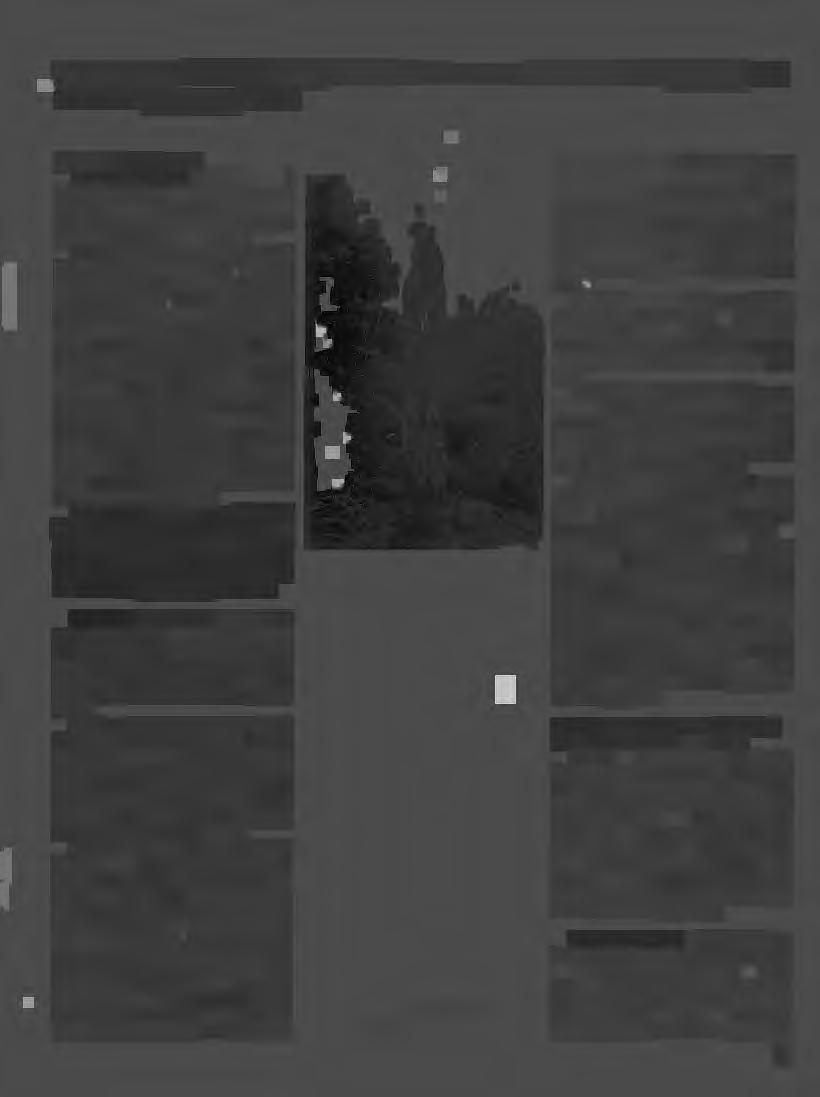
wise sophistication, Kenneth White, with a humorous sketch of New England spinsterhood, Fred Rothermell, with virile human studies from observation, and Carleton Brown, with a group of stories too good for commercial magazines to publish. Avery Ashwood furnished excerpts from a diary of a soldier in Manila.
Of these writers, four were former residents of the Maverick .... Taken together with a story by Ernest Brace, they make up a third of the O'Brien annual anthology of Best Short Stories for that year.
We had proof that America has young genius, but our subscribers did not come up to their talent.At the end of the year there were eighteen renewals; the cost had been close to a thousand dollars. I could not afford to go on.
Another literary venture that I sponsored financially was an artist joke paper by Alex Brook and Peggy Bacon.The paper paid for itself from the start They called it the Hue and Cry, from a sheet they had published in London.After two issues the editorship was turned over to Paul Johnston, who took young Frank Schoonmaker for an apprentice and turned it over to him the next year. Frank made it a paying proposition and got out some elaborate annuals. He sold it to William Harlan Hale in the end, who in turn gave it over to Harold Johansen. It had a great life.
FRANK SCHOONMAKER (editorial from the Hue and Cry, 1926)
Pursuit is, in Woodstock, the universal occupation. We are all of us baying on the track of something, the good, the true, or the beautiful, forming together a sort of Hue and Cry in pursuit of the seven arts. To one who knows the real Woodstock this spirit of the hunt is perfectly apparent. There is the same goodnatured rivalry, the same lighthearted determination, the same complete cooperation whenever necessary.
HERVEY WHITE* I had wanted to make Pasciutti my agent. Here was the boy who could sell my books How the boy did peddle those manuscripts. He wore them as thin as the patience of the editors. He sold one by a fluke to Macmillan, after I had been offering it
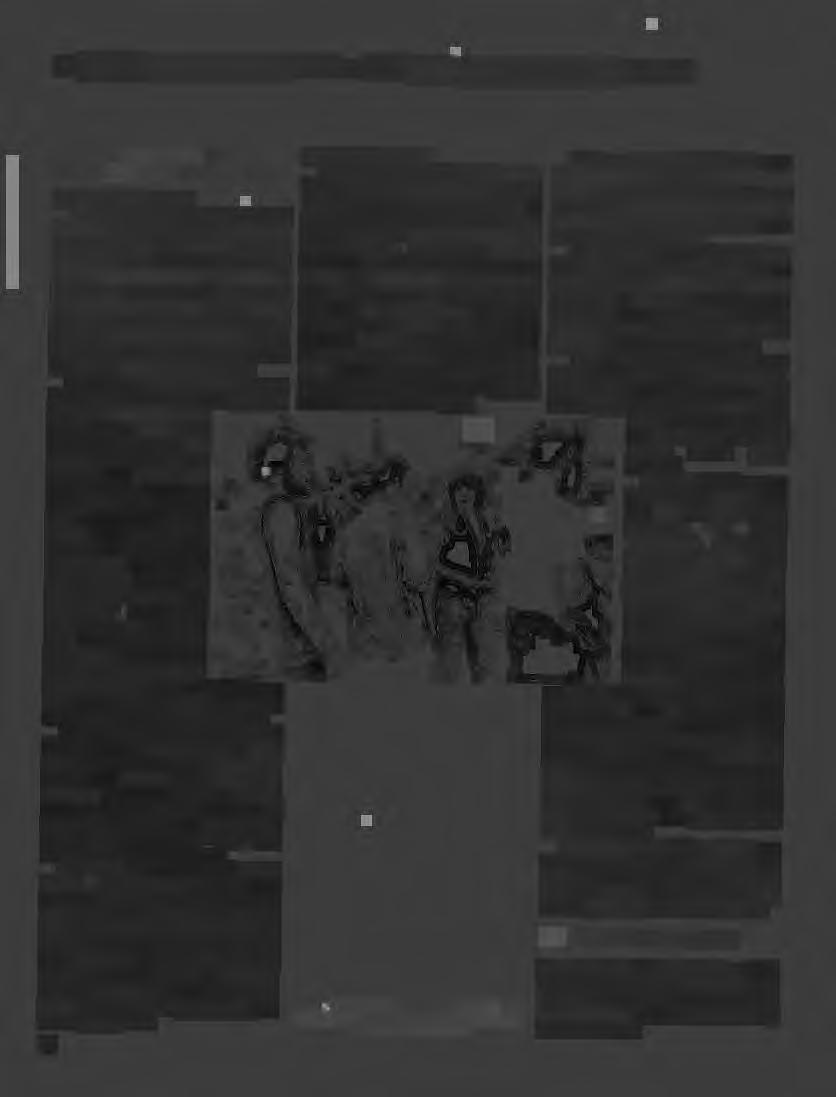
for sale for twenty years. He is working on them yet, may the Lord bless him.
At the entrance to the Maverick Colony stood the statue familiarly known as the Maverick Horse. Carved by John Bernard Flannagan in the early days of the colony, it became its emblem and symbolized the freedom necessary to the flourishing of all mavericks. The base is a partial figure of Hervey White, balancing on his upraised hands the image of his horse Roany.
Although the "mavericks" occupied separate houses and studios, still the energies were shared in a way that could be envied by those pilgrims of the sixties and seventies, who strove so hard for the reality of harmonious communal living styles. The sixties generation was deliberately dropping out of affluence. This group of youngsters actually believed they could stem the course of technology, turn a war around, and change the course of government. They worked, lived, talked, and made music to plead for their lives in a world that now housed the atom bomb.
It was also true that some of the people at the beginning of the century who lived on the Maverick, people like Hervey White and James Cooney, lived their lives as a statement of protest against the world of government, wars, and technology which they saw as eating away the freedoms of the individual.
However, for many of the "mavericks," particularly those who had affluent families, theirs was a time of sitting out a Depression, waiting for government or business to change and right the problems of the country. It never occurred to them that the power of the change could be theirs, as it did to the majority of the sixties generation all those years later.
The ministers of the village circulated a petition protesting certain activities at the Maverick Festival. It was signed with the anonymous and mysterious signature "The Committee of Fifty." There was a seasod. of loud discussion back and forth along the streets of the village, in the newspapers and periodicals. It was the artists, of course, who were to address the issue in a most humorous way. The next festival was to see artists' family and friends arrive at the Maverick bearing a placard that proclaimed their act "Spoof on the Committee of Fifty."
Who was Hervey White, this man of the quiet mien and the enigmatic eyes, this central spirit around which the merry-go-round of festivals, theater, music, poetry, and dance kaleidoscoped?
The festivals, and that unique period of daily life experienced in an American art colony of the early 1900s,fed a curiosity to know more about the man whose vision and energies were responsible for those exciting and outrageous times.
The remembrances in this narrative now span over seventy years. Time-worn and burnished a softened gold, memories were what each narrator wished to leave recorded of those times they shared.
Hervey White was a true utopian who held out for all of his life against all that "progress" that was sweeping along the world of his time. A promoter of the arts, disdainer of the sciences of technology, a temperate man who lost his temper when others chose to modernize, commercialize, or change the shape of his vision with theirs. A man of awareness but open to the freedom needed by each to express his or her ways. A romantic who was unable for whatever reason to sustain his marriage. A nurturing father who lost his children. A man of humor and of compassion. A man of friendship who died alone.
Perhaps it is that a life is no more tangible than a computer image across a screen and the impression and effect are in the hands t1:nd minds of those who bear witness.
-© Jean Gaede & Fritzi Striebel
Jean Gaede has worked at the Woodstock Artists' Association as a gallery manager. Fritzi Striebel is a craftsperson and a collector of Woodstock art.
A Sharp Lookout is both an echo from Woodstock's illustrious past and a response to the present. Marking the Center for Photography's twentieth year, the exhibition is .also part of a larger celebration of Wood-stock's preeminent history, including its legacy as an artist's colony beginning in 1902 and as a locus for the study of nature dating back to the nineteenth century. • •
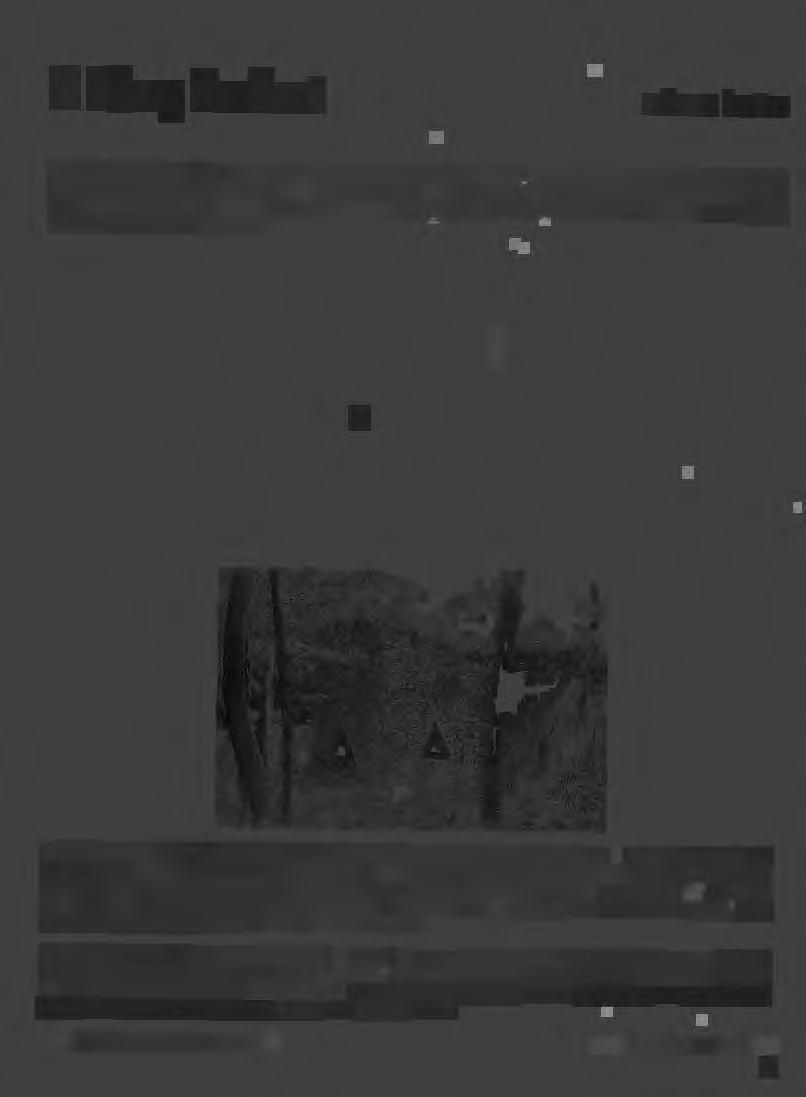
A Sharp Lookout, has been borrowed from theAmerican naturalist,John Burroughs (1837-1921),a resident of the Hudson River Valley,who coined the phrase for an essay published in his collection, Signs and Seasons (1886). Burroughs wrote A Sharp Lookout to describe his own assiduous study of nature. "So the observer ... ,"he wrote, "gets the fact, not only because he has patience, but because his eye is sharp and his inference swift," aptly describing photographic skills, as well as those of a writer.
Burroughs's belief that "all good observation [of nature] is more or less a refining and transmuting process, and the secret is to know the crude material when you see it,"functions here as the common thread connecting the work of seven contemporary regional photographers: Susan Fowler-Gallagher, Forrest Holzapfel, Eric Lindbloom, Judy Linn, Joshua Lutz, Stephen Shore, and Jessica Weitz.
Below: Judy Linn, Revolutio11ary War Fou11dry, 1995
Organized as essays on the theme of landscape, are seven divergent photographic series, and all but two contain images taken within or near the Hudson River Valley.The photographs of Forrest Holzapfel, Eric Lindbloom, and Stephen Shore are rooted in a sense of place.They capture with intensity the "home feeling" described by Burroughs when "one's own landscape comes in time to be a sort of outlying part of himself." Along with Susan FowlerGallagher's Wolf Hours series, which explores the phenomenon of twilight, these photographs each offer a quiet, unencumbered moment to observe particular facets of the region's landscape, those that are all too often overlooked or unseen by the casual or lazy eye.
The series of photographs by Linn and Lutz at first seem unrelated, yet in each it is evident that the photographer's intuition has shaped the landscape for us.These are uncanny, seemingly miraculous images produced by a detached but observant eye. Weitz's photographs of the reconstruction of the former East Berlin juxtapose the old and the new, the past and the future, becoming an exploration of the transformed landscape.

Stephen Shore hands us a magnifying glass. Eric Lindbloom envelops us by using a panoramic camera·. Susan FowlerGallagher places us within the slippery, mysterious moment of twilight. Forrest Holzapfel's photographs of ruins evoke the past, while Joshua L~tz's photographs are like postmodernist jigsaw puzzles. Judy Linn translates the unassuming into the uncommon, and Jessica Weitz presents a strange landscape, more macabre and menacing in feeling than one would expect of a city in the throes of rebirth.
The work of these photographers reminds us that the art of description, particularly as it relates to landscape photography, is always a surprise. The photographs presented here affirm Burrough's notion that those who exercise "a sharp lookout" can turn the familiar into the exceptional.-© 1997 Rebecca Lawton
Rebecca Lawton is the Curator at the Frances Lehman Loeb Art Center at Vassar College (Poughkeepsie, New York). In her role as the curator of collections she participated in the planning process for the new Vassar art center. She has organized l You Art Missing Plenty if You Don't Buy Here and American Fighters.A Century of Boxing Art. Below: Erle Lindbloom, Tivoli Bays, A1111andale-on-Hudso1~ NY, 1994The richness and diversity of creative efforts in Woodstock, NewYork, throughout this century are no secret; nor is the wonderful and colorful list of personalities who lived here, summered here, passed through here, or otherwise left their mark. But until the last twenty years the photographers and artists of other media who photographed

seriously were on the sidelines.Thankfully, much of this local injustice has been corrected. While only showing the proverbial tip of the iceberg, this display demonstrates a level of achievement, quality, and diversity commensurate with the best photography of the first half of the twentieth century.
- © 1997 Howard GreenbergCurator Howard Greenberg moved to Woodstock, NewYork in 1972 where he became a full-time photographer. In 1977 he founded the Catskill Center for Photography (now the Center for Photography at Woodstock) and was its Executive Director until 1980. He began Photofind Gallery in Woodstock in 1981; in 1986, Greenberg moved Photofind Gallery to NewYork City, and in 1991, Photofind Gallery became the Howard Greenberg Gallery. Mr. Greenberg has
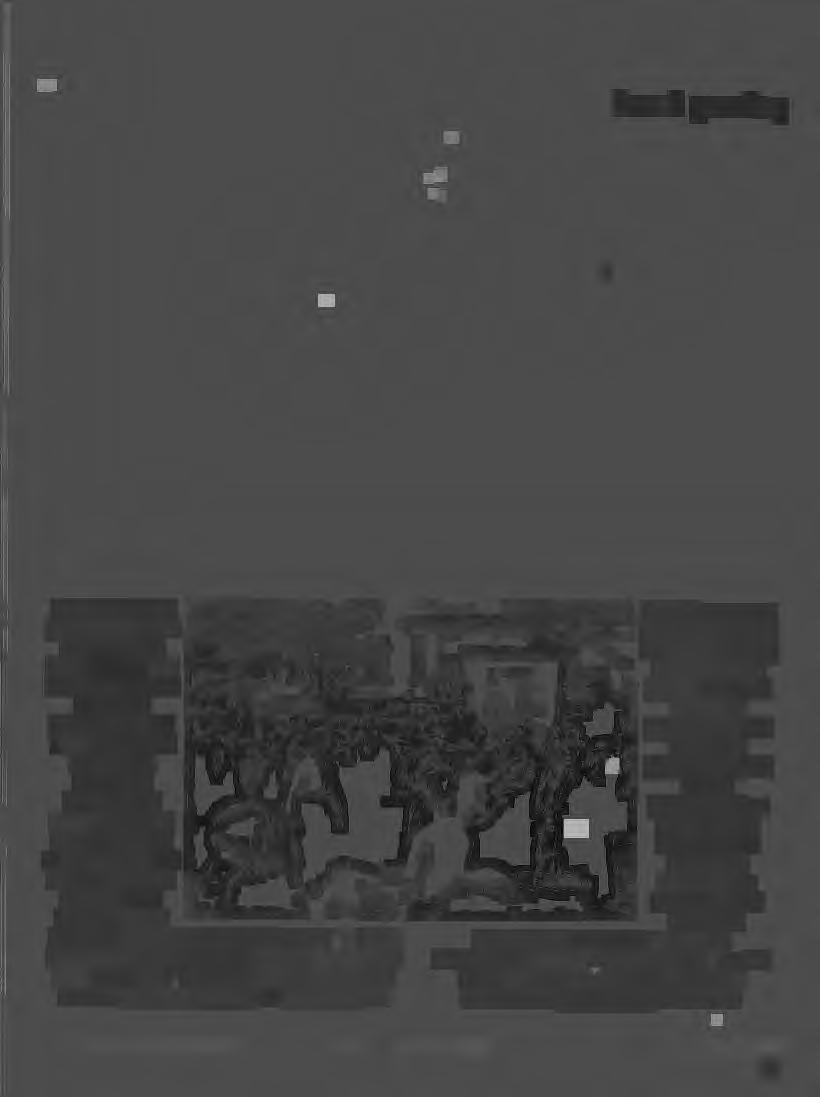
' curated numerous exhibitions; served as a juror for many awards; spoken widely about the history of photography and collecting photography, and taught photography on the university level. Howard Greenberg currently is a member of the American
Photographic Historical Society, the International Society o_fAppraisers; he is on the Board of Directors ·of the Association of International Photography Art Dealers.
left:Yasuo Kuniyoshi,Sarab Smoki11g, c. 1938 center: Russell Lee, Woodstock, 1936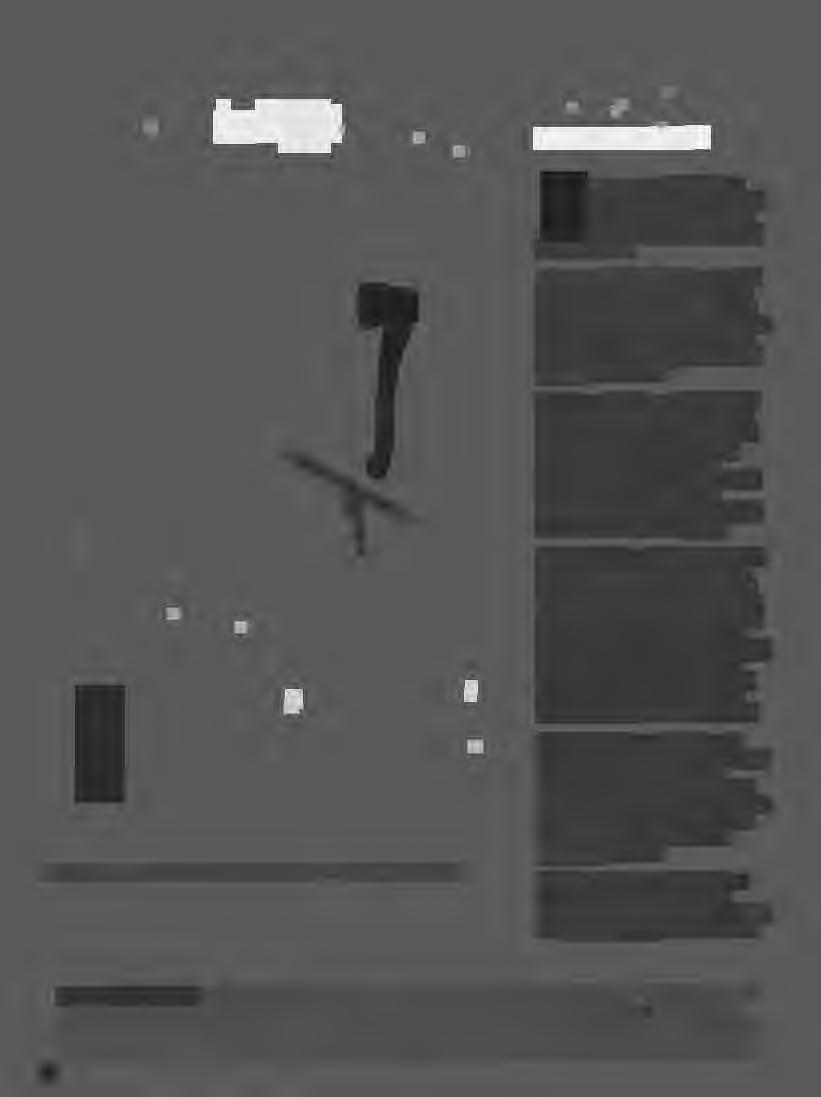
A•- G - k ice ar1c
Four yearsago I movedto an area of Vermontcalled Kansas.I was told that the peoplein my areawere Appalachian.Quickly lives unfoldhere.
Andy spentgraduationnighton our sofa becausesomeof his classmateswere out lookingfor him, shotgunsin tow.He fearedwalkinghome,a quartermile down the road.A few days later he left to join the Marines.He is faringwell.Survivalis knowingwhento duck.
An old man and his son, neighborswho ran a lawn business,mowedas we sat downto dinner.I calledto complainand he said he wouldserve us no longer. Now,Harry,who has plantedmy vegetablegarden,mowsat dinnertime.I don't complain.Wherethere is a relationship,there is valueto work being doneand that value is not money.
Scoutand Mattare organicfarmers,who studiedagricultureat the Universityof Vermont.They live in the housebuilt by Scout'sgrandfather.He commissioneda farmerto makehis furniture.The farmer told him outrightthat it wouldtake two yearsand searchedthe forestfor the right woodand usedthe hidesof his own cows.I havejust sat in a rockerof bent woodand cow rawhide.It is the most comfortablechair in which I've eversat.
Glassnegativeswere givento me to makeprintsfor memory'ssake.The man, whosefathertook them,wantsto rememberwhat his trophies-the farm and cow barns-looked like.This son of a photographerdoes not like to havehis own picturetaken.He allowsme to photographhis barns.
I walk out into the Vermontnight.I am awareof squaresmall housesand propertiescut squarelyundera starlitsky. The milkywaywrapsaroundlike a belt.
TheCenterSlideRegistryis a selectedslidearchiveof contemporaryimagesemployingphotographyandcomputergeneratedimagery. It providesa bridgebetweentheartistcurators/collectors/andtheCenter,makingcontemporaryworkeasyto access - by appointmentWednesdaythroughSunday,noonto 5 pm.Artistswhowishto haveworkincludedin the RegistryshouldcontacttheCenterfor detailsonthis specialmembershipopportunity.Fromthe RegistrytheCenterstaffselectssoloexhibitionsandfeaturesexceptionalimagesin the Quarterly
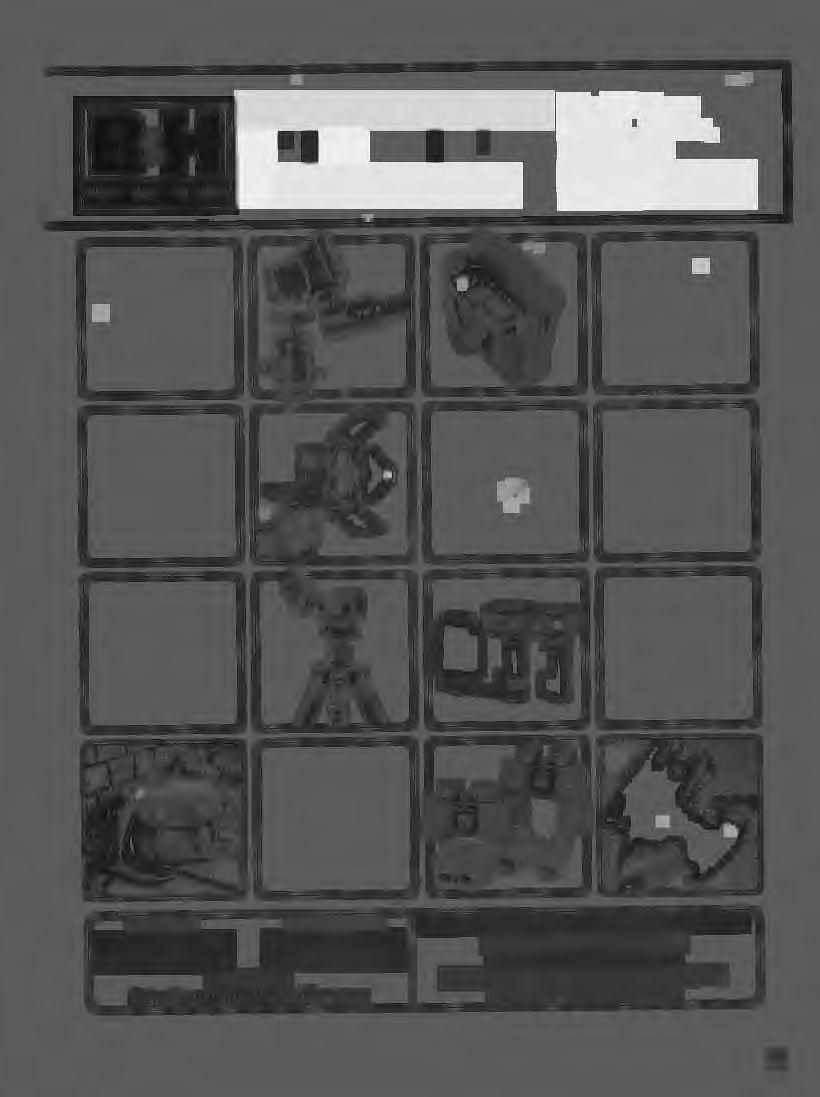
Center galleries and edu ,.tional resources ar~ free and , open to the public We esday -Sunday, noon to 5 pm; community darkroo rentals available. We welcome teachers to call us for tided tours. Volunteers needed! Teens to seniors, et new friends, learn new skills. Call 914-679-9957.
Thursday, )1rJ:lf I 9 - Sunday, _March29
HIGHSCHOOLPHOTOGRAPHY
rurday, April 4 -Sunday, May 10
VISION20/20 I CURATORCAROLSQUIERS he past-leap into the new-what carries us hotographers Mark Abrahamson,Amy Auerbach, ruce Bennett, Margo Cooper, George Harvey, Cynthia Retting, Beth Reynolds, Paul Smith, Shasti O'Leary Soudant, Joy Taylor.
SOLO:CHARLESGROSS/REFLECTIONS An exhibition of abstract color landscapes.
Sunday, May 24 -Sunday,June 28
DIGITALSORCERY I CURATORMARILYNWALIGORE
Computerized photography/ digital metamorphosis by artists Patrick Lichty, Fern Logan, Nancy Macko, Stephen Marc,Allison Petit.The notion of sorcery or of magic has a, a double connotation: enchantment, a transformation a. resulting in the production of visual beauty; or c subversive activity, explorations of technology that '-' in promote the expressions of alternative voices. Digital processes fosters a new freedom from photographic reality and prompts the redefinition of the medium.
SOLO:ANNLOVETT/THEBOOKOFTHEBODY
Installation including color computer images, text, and interactive video. Medical x-rays enlarged to 20x24", photographs silk-screened text panels, table and chair with book of stories to which audience may add. Body is
sponsored by Hospice, Inc. (Dutchess aq.d Ulster
Counties, New York). Lovett creates an environment in l which increased understanding of health is fostered l through dialogt1e.
